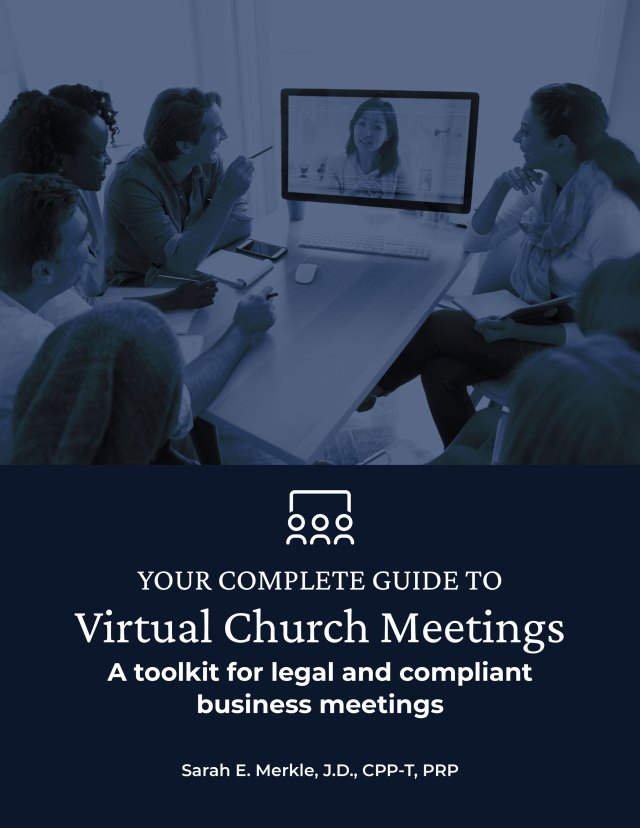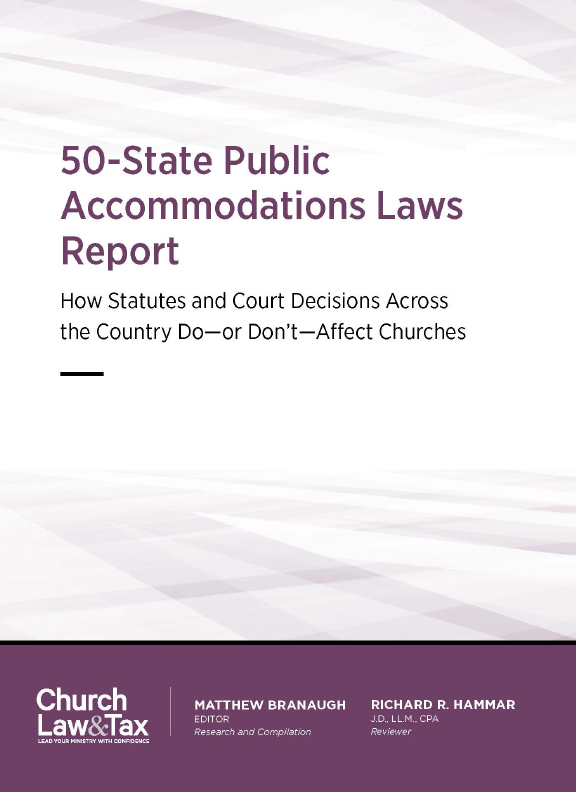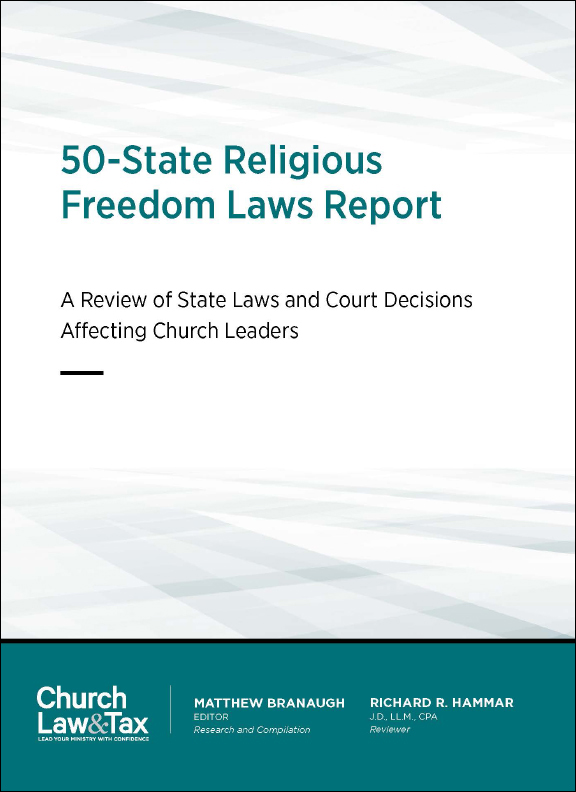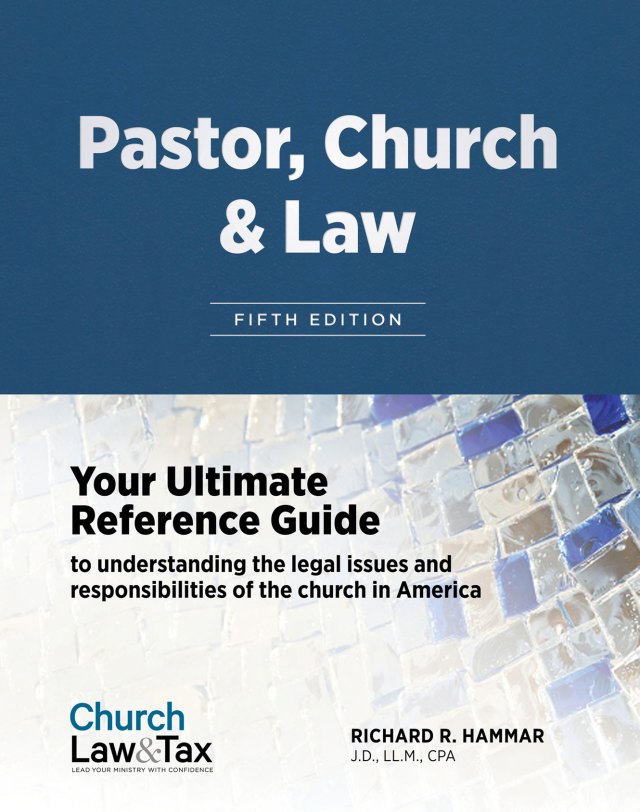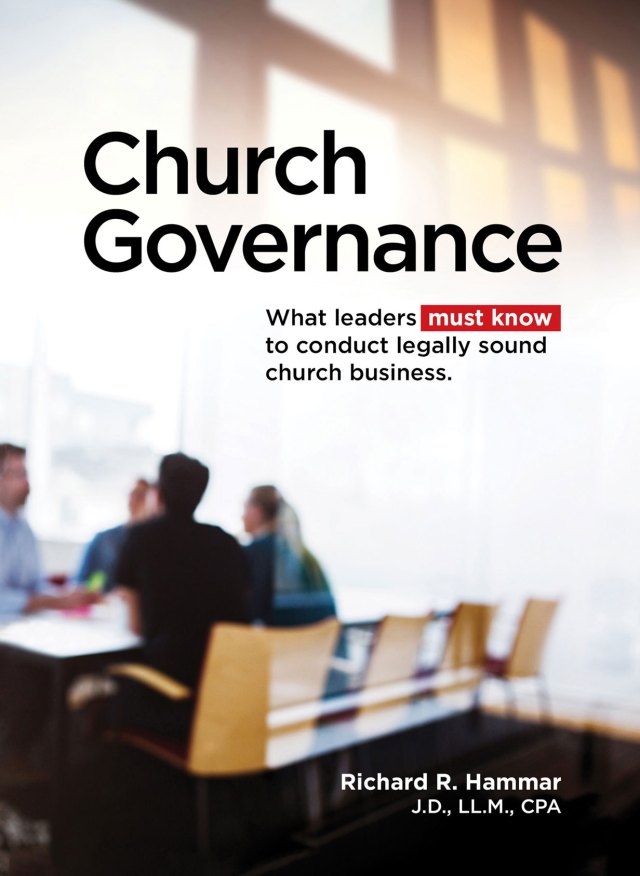The night of a church’s monthly board meeting arrives. The agenda includes a critical and time-sensitive issue. Unfortunately, only four board members show up, two less than the six members needed for a quorum, according to the church bylaws. The four members wait several minutes for additional members to arrive. After half an hour, the pastor reaches two members by telephone. Both are out of town and unable to attend the meeting in person, but the pastor is able to connect them both by a conference call, and then activates the speaker phone so that both of them can hear and be heard along with the other members who are physically present. The pastor and board are confident that this arrangement satisfies the quorum requirement.
But does it? Must board members be physically present to be included in a quorum? Is a board meeting legal if one or more members participate by means of a conference telephone call, or some other means of electronic communication? And if it is not a legal meeting, what effect does this have on decisions made during the meeting?
Or consider this: A church needs to have the board approve a transaction without waiting for the next scheduled board meeting. The church office sends an e-mail to all seven members of the board, asking for their approval. All seven members reply, noting their approval of the transaction. Is the transaction legally authorized? What if one member does not approve the transaction?
Any church that allows one or more members to participate in board meetings by means of electronic communication, or that authorizes actions of the board by common consent, should be certain that such practices are legally authorized. This article will address:
The legality of such practices;
The status of actions taken in meetings in which one or more persons participate by means of telephone or some other means of electronic communication;
How to properly authorize electronic meetings;
Taking official action by common consent using e-mail or other means of electronic communication.
1. The legality of electronic participation in church board meetings
There are four possible grounds for validating the participation of persons in a church board meeting by means of conference telephone call or other electronic communication.
(1) bylaws
The first place to look in evaluating the legality of board members’ participation in board meetings by means of electronic communications is a church’s bylaws or other governing document. While few churches address this subject in their bylaws, it is a practice that should be considered. Sample bylaw language is provided later in this article.
(2) nonprofit corporation law
If the participation by board members in board meetings by means of electronic devices is not authorized in a church’s bylaws, is it permitted by applicable nonprofit corporation law? That depends on whether a church is incorporated, and the provisions of the applicable nonprofit corporation law.
A majority of states (39) have adopted the Model Nonprofit Corporation Act or the Revised Nonprofit Corporation Act, and this has provided considerable uniformity on matters of nonprofit corporation law. To illustrate, the Revised Model Nonprofit Corporation Act (1987 and 2008 editions) provides:
Unless the articles or bylaws provide otherwise, a board may permit any or all directors to participate in a regular or special meeting by, or conduct the meeting through the use of, any means of communication by which all directors participating may simultaneously hear each other during the meeting. A director participating in a meeting by this means is deemed to be present in person at the meeting.
Note the following key points:
First, if a state nonprofit corporation law had adopted this provision, without modification, then churches in that state that are incorporated under this statute do not need to amend their bylaws to authorize participation by board members in board meetings by electronic devices since such participation is authorized by statute.
Second, in some states, the model statute is adopted, but with changes.
Third, 11 states have not adopted the Model Nonprofit Corporation Act.
Fourth, many states that have adopted the Model Nonprofit Corporation Act (or one of its revisions) have a second, and often older, nonprofit corporation law under which churches can incorporate, and these laws are less likely to address electronic participation in church board meetings.
Here are some examples of how states have addressed the issue of board member participation in church board meetings by electronic devices:
California Corporations Code, section 9211(a)6)
Unless otherwise provided in the articles or in the bylaws, all of the following apply . . . (6) Directors may participate in a meeting through use of conference telephone, electronic video screen communication, or electronic transmission by and to the corporation. Participation in a meeting through use of conference telephone or electronic video screen communication pursuant to this subdivision constitutes presence in person at that meeting as long as all directors participating in the meeting are able to hear one another. Participation in a meeting through use of electronic transmission by and to the corporation, other than conference telephone and electronic video screen communication pursuant to this subdivision constitutes presence in person at that meeting, if both of the following apply:
New York Not-for-Profit Corporations Law, section 708
Unless otherwise restricted by the certificate of incorporation or the by-laws, any one or more members of the board or any committee thereof may participate in a meeting of such board or committee by means of a conference telephone or similar communications equipment allowing all persons participating in the meeting to hear each other at the same time. Participation by such means shall constitute presence in person at a meeting.
Texas Business Organizations Code, section 22.002
Subject to the provisions of this code and the certificate of formation and bylaws of a corporation, a meeting of the members of a corporation, the board of directors of a corporation, or any committee designated by the board of directors of a corporation may be held by means of a remote electronic communications system, including videoconferencing technology or the Internet, only if:
- each person entitled to participate in the meeting consents to the meeting being held by means of that system; and
- the system provides access to the meeting in a manner or using a method by which each person participating in the meeting can communicate concurrently with each other participant.
- Bylaws of Yale University
Regular meetings of the President and Fellows (Corporation), unless otherwise ordered, shall be held at least five times during each year as scheduled by the Corporation on recommendation of the President. . . . A member may be present at any meeting by any means of communication which permits all members to simultaneously hear one another.
- Such provisions illustrate the importance of being familiar with the state nonprofit corporation law under which a church is incorporated in determining if board members can participate in church board meetings by means of conference telephone call or other electronic devices.
- (3) parliamentary procedure
- The 11th edition of Robert’s Rules of Order Newly Revised (2011) devotes three pages to “electronic meetings,” up from one paragraph in the 10th edition. Here are some of the main points in the 11th edition:
- (a) in general
- Business can only be conducted in a properly called meeting, defined as “a single official gathering of members in one room or area to transaction business.” The new edition of Robert’s Rules of Order Newly Revised clarifies that a church’s bylaws can authorize the conduct of official meetings of members in electronic meetings “at which, rather than all participating members being physically present in one room or area as in traditional (face-to-face) meetings, some or all of them communicate with the others through electronic means such as the Internet or by telephone.” A meeting conducted by electronic means “does not lose its character as a deliberative assembly so long as the meetings provide, at a minimum, conditions of opportunity for simultaneous aural communications among all participating members equivalent to those of meetings held in one room or area. Under such conditions, an electronic meeting that is properly authorized by the bylaws is treated as though it were a meeting at which all the members who are participating are actually present.”
Key point. Membership meetings in most churches are too large to be conducted by electronic means. As a result, the option of electronic meetings will have the most relevance to board and committee meetings consisting of a smaller number of participants.
- Robert’s Rules of Order Newly Revised stresses that electronic meetings are allowed only if authorized by an organization’s bylaws. This statement is incomplete, since it omits any reference to applicable state nonprofit corporation law. Incorporated churches can provide for electronic meetings in their bylaws only if authorized by the applicable nonprofit corporation statute. In most states, nonprofit corporation laws have been revised in recent years to allow boards to meet electronically. For example, a typical statute provides:
Subject to the provisions of this code and the certificate of formation and bylaws of a corporation, a meeting of the members of a corporation, the board of directors of a corporation, or any committee designated by the board of directors of a corporation may be held by means of a remote electronic communications system, including videoconferencing technology or the Internet, only if:
- each person entitled to participate in the meeting consents to the meeting being held by means of that system; and
- the system provides access to the meeting in a manner or using a method by which each person participating in the meeting can communicate concurrently with each other participant.
- The Model Nonprofit Corporation Act, which has been adopted by several states, provides:
Unless the articles or bylaws provide otherwise, a board may permit any or all directors to participate in a regular or special meeting by, or conduct the meeting through the use of, any means of communication by which all directors participating may simultaneously hear each other during the meeting. A director participating in a meeting by this means is deemed to be present in person at the meeting.
- There is some variation in state nonprofit corporation laws regarding the conduct of electronic meetings. Church leaders should be familiar with the wording of their state nonprofit corporation law’s treatment of electronic meetings before amending the church’s bylaws to provide for such meetings.
- Robert’s Rules of Order Newly Revised calls attention to an important distinction between videoconference, audio conference, and teleconference: “Various provisions for electronic meetings are possible …. Thus, if the bylaws provide for meeting by videoconference (but not merely teleconference or audioconference) the meeting must be conducted by a technology that allows all participating members to see each other, as well as to hear each other, at the same time.”
Example. A state nonprofit corporation law allows corporations to provide for electronic meetings in their bylaws. A church amends its bylaws to allow the board to conduct regular or special meetings by “videoconference.” Board meetings conducted via conference telephone call would not be authorized under this bylaw provision. This example illustrates the importance of using correct terminology in bylaw amendments.
Example. A church is not incorporated, its bylaws do not authorize electronic meetings of the board, and it has adopted Robert’s Rules of Order Newly RevisedRobert’s Rules of Order Newly Revised as its parliamentary authority. The board cannot utilize electronic meetings. The new edition of states that “except as authorized in the bylaws, the business of an organization or board can be validly transacted only at a regular or properly called meeting—that is . . . a single official gathering in one room or area of the assembly of its members at which a quorum is present.”
- (b) notice
- The 11th edition of Robert’s Rules of Order Newly Revised clarifies that notice of regular meetings of organizations or boards may be sent by electronic communication if a recipient has agreed to receive this form of notice. Robert’s Rules of Order Newly Revised states: “When notice is required to be sent, unless a different standard is specified that requirement is met if written notice is sent to each member either: (a) by postal mail to the member’s last known address; or (b) by a form of electronic communication, such as email or fax, by which the member has agreed to receive notice.”
Key point. Church bylaws often specify that notice of a regular or annual meeting of church members is given in one or more worship services preceding the date of the meeting. Electronic notice in such circumstances would not be allowed. However, it would be feasible for church bylaws to authorize notice of board meetings to be given in this manner.
Example. A church adopted Robert’s Rules of Order Newly Revised as its parliamentary authority. The church bylaws require notice of board meetings to be sent at least one week in advance of the meeting to each board member. Unless the bylaws require written notice, the church may send notices of board meetings by email or fax so long as the board has agreed to this form of notice.
- (c) additional rules
- Robert’s Rules of Order Newly Revised recommends that churches wanting to authorize electronic meetings of boards and committees consider addressing the following issues in either the bylaws or standing rules:
the type of equipment required for participation in meetings;
contingencies for technical difficulties or malfunctions;
determination of a quorum;
how to raise a point of order challenging the continuing existence of a quorum;
how to seek recognition and obtain the floor;
how motions are to be submitted in writing;
methods for taking and verifying votes;
provisions for ensuring that nonmembers do not participate, especially in the case of special meetings in which confidential information will be shared.
Key point. Note that secret ballots generally are not possible in electronic meetings, which may make such meetings inadvisable in some cases.
- Note that participation by board members in church board meetings by means of conference telephone calls or other electronic devices is, as explained above, a subject that likely is addressed in a church’s bylaws or in the nonprofit corporation law under which a church is incorporated. This subject has nothing to do with parliamentary procedure and therefore its inclusion in Robert’s Rules of Order Newly Revised not only is inappropriate, but creates needless confusion due to the inevitable conflicts that will arise between a church’s bylaws and its parliamentary authority.
- “Any action required or permitted to be taken at any meeting of the Board of Directors may be taken without a meeting provided that a majority of the Directors consent thereto in writing or by electronic transmission.”
- How should church leaders determine the governing document when there is a conflict in the various sources of authority? Table 1 provides church leaders with a tool for determining the ranking of various sources of authority in “congregational” churches (those that function independent of a religious hierarchy). Start at the top, and go down the list until you find the highest authority to address a particular question. This process will guide you to the controlling authority.
- According to Table 1, the revised section in Robert’s Rules of Order Newly Revised pertaining to electronic meetings would have no relevance or application in a church that is incorporated under a state nonprofit corporation law that addresses electronic voting and participation in church board meetings, or whose charter, constitution, or bylaws address the issue, making conflicting provisions in Robert’s Rules of Order Newly Revised inapplicable and irrelevant. ”The bottom line is that much of Robert’s Rules of Order Newly Revised is completely superfluous and irrelevant due to the coverage of the same issues in the higher authority of nonprofit corporation law, or a church’s bylaws.
- (4) established custom
- In the rare event that the issue of electronic participation in church board meetings is not addressed in a church’s governing documents, or the state nonprofit corporation law under which a church is incorporated, then it is possible for such a practice to be authorized by established custom. Note, however, that custom in this context does not refer to sporadic or occasional examples. Rather, it means a consistent practice over a prolonged period of time.
- 2. The status of actions taken in meetings in which one or more persons participate by means of telephone or some other means of electronic communication
- In summary, the participation of members in board meetings by means of conference telephone or other electronic technology is permissible if authorized by a church’s bylaws or other governing document, the nonprofit corporation law under which a church is incorporated, Robert’s Rules of Order Newly Revised or other parliamentary authority, or established custom. If participation by board members in church board meetings is not validated by any of these methods, then the legal status of any actions taken in meetings may be jeopardized. This is more likely if the applicable quorum requirement was not met by persons in physical attendance at the meeting.
- 3. How to properly authorize electronic meetings
- The simplest way to authorize participation in church board meetings by conference telephone call or other electronic means is to include a provision in a church’s bylaws or other governing document that authorizes the practice. Here are some examples of bylaw provisions that easily could be adapted for church use:
- Bylaws of the Federal Reserve Bank of New York
- At all meetings of the Board of Directors a majority of the Directors shall be necessary and sufficient to constitute a quorum for the transaction of business, and action by the Board at a meeting shall be upon vote of a majority of the Directors present at any meeting of the Board at which a quorum is present. Directors participating in a meeting of the Board by means of a conference call, video conference, or such other means that allow for each participant to hear and be heard by each other participant at the same time, shall be deemed to be present at such meeting ….
- Meetings of the Board may be held in-person, or by means of conference call, video conference, or such other means that allow for each participant to hear and be heard by each other participant at the same time, and any business may be transacted at such a meeting that could have been transacted at any other meeting of the Board.
- Bylaws of Duke University
- A majority of the members of the Board of Trustees shall be a quorum for the transaction of business. A Trustee shall be deemed present at a meeting of the Board of Trustees if that Trustee participates in the meeting through the use of a conference telephone or similar communications equipment by means of which all persons participating in the meeting can hear each other.
- Bylaws of the Ford Foundation
- A member of the Board of Trustees or of a committee designated by the Board of Trustees may participate in a meeting by means of conference telephone or similar communications equipment by means of which all persons participating in the meeting can hear each other, and such participation in a meeting shall constitute presence in person at such meeting.
- Bylaws of Google Inc.
- Unless otherwise restricted by the Certificate or these bylaws, members of the Board, or any committee designated by the Board, may participate in a meeting of the Board, or any committee, by means of conference telephone or other communications equipment by means of which all persons participating in the meeting can hear each other, and such participation in a meeting shall constitute presence in person at the meeting.
- Bylaws of The General Council of the Assemblies of God
- Members of the [board of directors] may participate and act at any meeting through the use of a conference telephone or other communications device by means of which all persons participating in the meeting can communicate simultaneously with each other. Participation in such meeting shall constitute attendance and presence in person at the meeting of the member or members so participating.
- Any of these provisions can be adapted for use by a church. As with any bylaw amendment, the assistance of an attorney is recommended. Here are the key elements to include:
A board member can “attend” a regular or special meeting of the board by conference telephone call or other electronic device;
A general definition of the technology allowed;
A stipulation that the approved electronic technology must allow each participant in the meeting to hear and be heard by the other participants at the same time;
A note that a person’ is “present” if using approved electronic equipment, and is counted in determining if a quorum exists.
Example. A church’s bylaws specify that a quorum for meetings of the board is seven members. At a monthly meeting of the board, only five members are present. Those present proceed to conduct business, and approve a loan at a local bank. Upon review, the bank later determines that the church board did not authorize the loan since a quorum was absent at the meeting in which the loan was discussed.
Example. Same facts as the previous example, except that the church bylaws authorize the attendance of board members at board meetings by means of electronic communications devices that allow simultaneous communication by all members. The loan is still unauthorized since a sufficient number of board members were not included in the meeting by conference telephone or other electronic device to satisfy the quorum requirement.
Example. A church’s bylaws permit board members to attend board meetings by means of conference telephone or other electronic device that permits each member to “communicate with the other members at the same time.” Four members are not able to physically attend the meeting. Member A joins the meeting using Skype; member B joins using Facetime; member C joins via a speaker phone; and member D joins using e-mail. Are any of these four members “present” at the meeting? It is likely that A, B, and C are “present” according to the church bylaws. However, member D is not present since using e-mail does not provide for simultaneous communication among all the members.
- 4. Taking official action by common consent using e-mail or other means of electronic communication
- Some church boards occasionally take action without a meeting by means of unanimous written consent, usually due to an emergency for which immediate action is needed. While convenient, are such actions legally sound?
- As noted previously, a majority of states (39) have adopted the “Model Nonprofit Corporation Act” or the “Revised Nonprofit Corporation Act,” and this has provided considerable uniformity on matters of nonprofit corporation law. The Revised Model Nonprofit Corporation Act (1987 and 2008 editions) provides:
- Section 8.21. Action Without Meeting.
- Unless the articles or bylaws provide otherwise, action required or permitted by this Act to be taken at a board of directors’ meeting may be taken without a meeting if the action is taken by all members of the board. The action must be evidenced by one or more written consents describing the action taken, signed by each director, and included in the minutes filed with the corporate records reflecting the action taken.
- Action taken under this section is effective when the last director signs the consent, unless the consent specifies a different effective date.
- A consent signed under this section has the effect of a meeting vote and may be described as such in any document.
- Note that this provision will not necessarily apply to a church, since it has not been enacted by 11 states, and some churches have chosen not to incorporate. In such cases, a church should address the issue of actions by common consent in its bylaws. Here are some samples that can be adapted to church use:
- Bylaws of Duke University
- Any action required or permitted to be taken by the Board of Trustees at a meeting may be taken without a meeting by unanimous consent of all Trustees represented by one or more written consents describing the action so taken, signed by each Trustee, and filed with the University Secretary and included in the corporate minutes or filed with the corporate records. For the purpose of this [section] “written consents” shall include consents by members of the Board of Trustees in electronic form and delivered by electronic mail.
- Bylaws of the Federal Reserve Board of New York
- Any action required or permitted to be taken at any meeting of the Board of Directors may be taken without a meeting provided that a majority of the Directors consent thereto in writing or by electronic transmission. Any such action shall only be effective upon a vote either in writing or by electronic transmission of a majority of the Directors.
- Bylaws of Yale University
- Any action required or permitted to be taken at a meeting of the Corporation or any committee of the Corporation may be taken without a meeting if all the members entitled to vote on such action consent thereto in writing and the written consents are filed with records of the Corporation. Meetings of the Corporation shall be opened with prayer.
- Table 1: Priority Among Governing Documents in Congregational Churches:
- Note: When attempting to resolve any question of church administration in a “congregational” church (a church that functions independent of a religious hierarchy), relevant provisions in the following sources of authority generally are applied in the following order of priority.
-
document order of priority charter • the highest order of priority
• it’s provision take priority over any other source of authority
• start with the charter when attempting to resolve a question of administration; if it doesn’t address the matter, then proceed on to the next order of priority until an answer is foundconstitution • the second-highest order of priority
• takes priority over all other sources of authority except the charter, assuming that it is made superior to the bylaws either by express provision or by a greater voting requirement to amendbylaws • the third-highest order of priority
• takes priority over all other sources of authority except the charter and constitution (assuming the constitution is made superior to the bylaws)state non-profit corporation law • the fourth-highest order of priority
• it’s provision generally apply only if the church has not provided otherwise in its charter, constitution, or bylaws (including rules of parliamentary law adopted by the bylaws)
• state nonprofit corporation laws ordinarily make a few provisions mandatory despite a bylaw or charter provision to the contraryresolutions the fifth-highest order of priority
• resolutions can provide guidance in the event that the charter, constitution, bylaws, parliamentary law, and applicable state nonprofit corporation law do not address an issueparliamentary law the sixth-highest order of priority (assuming that a specific body of parliamentary law has been adopted) - Related article: “5 Questions Churches Should Ask Before Holding a Virtual Business Meeting”

